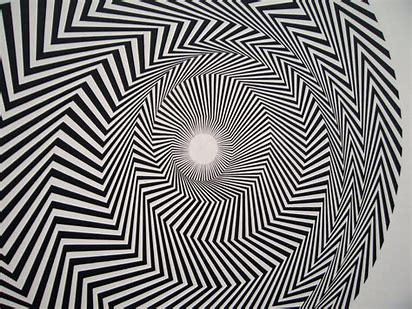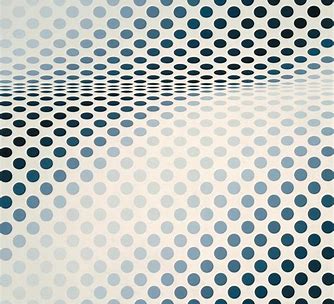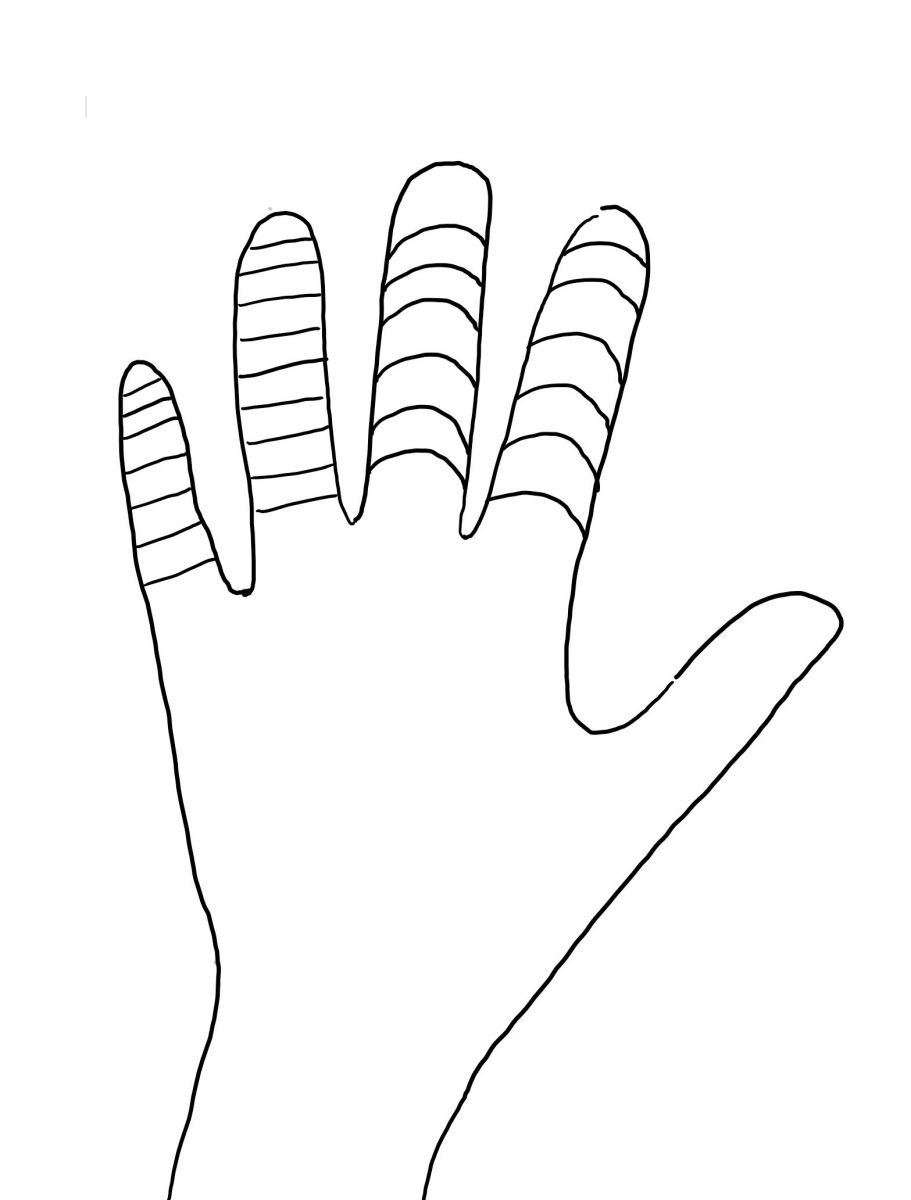After observing how line is used in Op Art to suggest optical illusions, students will draw contour lines around their hands and make a styrofoam master block for printing. Recommended for 5th Graders.
Line: the flat path of a dot through space used by artists to control the viewer’s eye movement; a long narrow mark or stroke made on or in a surface; a thin mark made by a pencil, pen, or brush. The repetition of lines (and/or shapes) is used to create texture, pattern, and gradations of value. A Contour line defines a form or the edge of an object’s outline.
Space: the illusion of depth or space on a flat surface. Positive space is the actual space taken up by the line, shape, or form. Negative space is the empty space surrounding a shape, figure, or form in a two- or three-dimensional artwork .
Contrast: use of differing elements to create interest. In this lesson, contrast is demonstrated in color with the use of white (lines created when printmaking) and the ink color and with lines in the difference between the straight and curved lines.
Pattern: the repetition of line throughout the work of art.
Brayer: a hand tool used in printmaking to spread ink.
Printing Plate: the surface that is carved or etched to create the image that will be printed.
Op Art is an abstract style that uses optical illusions often comprised of geometric patterns of line & shape, contour lines implying movement which suggested a 3-dimensional surface. Op Art is short for ‘optical art’. The word optical is used to describe how our eyes see things.
Born in England in 1931, Bridget Riley aspired to be an artist. She attended the Royal College of Art. After teaching children briefly, her style changed from impressionist painting to an evolved style exploring the dynamic potentialities of optical phenomena, which produce a disorienting physical effect on the eye. She became very successful as a painter. Others adopted this style, Op Art, during the artistic revolution of the 1960s. She currently lives and works in England and France.



Find images of Op Art that manipulate space using lines (the work of artist Bridget Riley, specifically “The Emergence of Color,” can be viewed at the Op-art website), to show students.
Draw around your hand onto a large piece of paper to prepare for the contour line demonstration.
If possible, it’s a good idea to create a finished example before teaching this lesson (this provides an example to show students and also allows you to get a better feel for small details that might be helpful to point out to students as they are working).
Using examples of Bridget Riley's work, other Op-art and/or the example created for this lesson, point out how the lines curve or angle to suggest a 3-dimensional surface. Point out how repetition of lines creates movement that allows the eye to travel across the suggested surface.
Students will draw their hands using only contour lines. They will carve/draw/transfer this drawing into the Styrofoam scratch foam sheet to create a master block. They will make prints from the masters, using appropriate tools to do it. They will view examples of Op Art similar to the prints they will create.









.jpg)
.jpg)
.jpg)
Lesson written by Cynthia Moring. YouTube instructional video: https://www.youtube.com/watch?v=oMgLiU-hWUo, additional websites offering examples of Bridget Riley’s artwork and background: www.op-art.co.uk/bridget-riley/,https://www.artnet.com/artists/bridget-riley.
21st Century Thinking Skills
Persisting, Creating, Reflecting, Observing, Making Connections, Sequencing, Contrasting, Finding Evidence, Analyzing.
WA State Learning Standards
(VA: Cr2.1.4) a. Explore and invent art-making techniques and approaches. This happens when learning the block printing method.
(VA: Cr2.2.5) a. Demonstrate quality craftsmanship through care for and use of materials, tools, and equipment.
(VA: Cr3.1.4) a. Revise artwork in progress on the basis of insights gained through peer discussion. This is achieved as you analyze how effectively the ink is transferred to the print.
(VA: Re7.1.5) a. Compare one's own interpretation of a work of art with the interpretation of others. This happens when students’ prints are displayed.
(VA: Re9.1.4) a. Apply one set of criteria to evaluate more than one work of art. This happens when you assess whether students learned the objectives of the lesson.
(VA: Re9.1.5) a. Recognize differences in criteria used to evaluate works of art depending on styles, genres, and media as well as historical and cultural contexts. This happens when Op Art is compared to more realistic styles of art & yet still retains cultural value to its era. (Modern, clean lines, innovative, optical illusions).
(VA: Cn10.1.4) a. Create works of art that reflect community cultural traditions. This happens if the community and culture of the 1960s (Op Art’s genesis) is revealed in detail.
Arts Integration Opportunities
Vocabulary words can be included in spelling lists.
Good procedural writing prompt.
Please note: These lesson plans are intended for non-profit use only. Use of these plans for commercial purposes should give attribution to the Issaquah Schools Foundation and be accompanied by a nominal donation at www.isfdn.org/donate. Thank you.
Fueling Success for Every Student, Every School